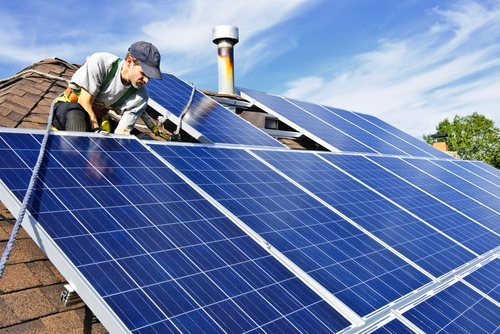A new analysis from the solar industry has demonstrated that the cost of the small-scale Renewable Energy Scheme (SRES) – which governs rooftop solar and hot water systems – will amount to zero for Australian households – contradicting the claims of the country’s biggest utilities.
The analysis released by the REC Agents Association (RAA) suggests that the gross cost of the certificates used to help pay for rooftop solar is minimal, and offset entirely by the reduction in wholesale prices that solar causes on the National Electricity Market.
The analysis is timely given that the government has finally released the terms of reference to its review of the renewable energy target, and the members who will sit on the panel.
The government is under intense pressure from state governments – the owners of generation and network assets that they are trying to sell – as well as private-ly owned utilities to reduce or cancel the incentives to rooftop solar.
That’s because, as Stanwell Corp has admitted, the proliferation of rooftop solar is reducing demand and pushing down prices, causing it to make a loss. However, the push to remove the rooftop subsidies is usually pitched as a move to remove “household electricity costs”, which usually gets uncritical play in the mainstream media.
The RAA analysis, however, seeks to demonstrate what a nonsense this claim is because the cost of the SRES is expected to halve over the next two years to less than 1% of a power bill. The reduction in wholesale electricity prices delivered by the SRES cancels out any related cost increase that gets passed through to customers.
“This analysis destroys the myth that the Renewable Energy Target is a major driver of soaring power bills”, said Ric Brazzale, President of RAA. “The Renewable Energy Target is low cost and high achieving. It must be maintained to finish its job.”
The RAA analysis uses Australian Energy Market Commission data to show the make up of power bills and the contribution of the two parts of the RET, the SRES and the Large-scale Renewable Energy Target (LRET).
As the table shows, the cost of the SRES amounts to just 2 per cent of the average household electricity bill, and will fall by more than half to less than 1 per cent within two years.
However, the impact of renewables is also to lower the cost of wholesale electricity prices. The AEMC has recognised this impact and consulting firm SKM quantified it in a study undertaken for the last RET review in late 2012.
That study put the fall in wholesale prices at up to $7.90 per MWh lower to 2022 due to the impact of the RET, with an average over the modelling period of $6.70 per MWh, or 0.67 cents per kWh.
The SRES is estimated to account for 40 per cent of the total RET impact from 2012 to 2020, and so it might account for an average reduction in wholesale prices of $2.70 per MWh. (Actually it could be greater given that it operates during the day time peak period). In any case, this is equivalent to 0.27 cents per kWh and exceeds that AEMC’s estimated cost pass through in 2015/16 of 0.24 cents per kWh.
“The reduction in the wholesale price exceeds the cost pass-through on customer bills, which means that residential customers will be better off in future with the operation of the SRES,” the study says.







